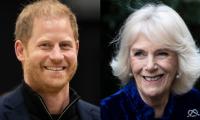“The Quartet will be a model for those who desire peace and prosperity and will provide evidence of the great opportunities lost through conflicts and squandered by blind extremism at the expense of people eager to live a good life”. This is how UAE President Sheikh Mohamed bin Zayed Al Nahyan has explained, to the inaugural I2U2 Group meeting, the key purpose behind the creation of this new group, which is being called the West Asia Quad.
The I2U2, which derives its name from India, Israel, the United Arab Emirates and the United States is a different kind of club that was conceptualized in October last year at the Washington residence of the UAE ambassador during a rather casual diplomatic get-together around a dining table. A very different kind of experimentation is being tried by these countries to “encourage joint investments” in six mutually identified areas such as water, energy, transportation, space, health, and food security.
The first meeting was not all in person – Narendra Modi and Sheikh Mohammad bin Zayed al Nahyan joined the session through video conferencing which was being held in Jerusalem where US President Joe Biden and Israeli Prime Minister Yair Lapid were sitting together. Even a cursory glance at the scope and proceedings of the I2U2 would reveal that it is one of the biggest diplomatic successes of New Delhi in recent times. India has been continuously expanding its tentacles in the region through multiple regional and subregional clubs with a view to establish its footprints as an authentic middle power as well as to counterbalance the Chinese influence in this part of the world.
Apparently, this new alignment, in which none of the members share geographical borders, is created in the wake of “economic and political risks” in an increasingly uncertain world with skyrocketing inflation, soaring food and fuel prices and a pandemic that drastically changed the ways of doing business. For quite some time, India has been pursuing the ‘hedging’ strategy to preempt the negative effects of the prevailing food insecurity and energy crisis – certainly a very wise drive by the policymakers in New Delhi.
Two big inaugural projects of the quartet have been announced, and both will be established in India. The first is related to the creation of a food corridor between India and the UAE. The joint food corridor is a part of a mega project by UAE investors to invest up to $5 billion in mega food parks in India and another $2 billion in contract farming as well as sourcing of agro-commodities and related infrastructure. The basic concept of the corridor was initiated three years ago and is aimed at ensuring food security for the UAE. Now it has become more strategic in nature given the global food crisis, driven partly by grains stuck in ports on the back of the Russia-Ukraine war. That’s why the UAE is eager to initiate this project as soon as possible.
The main inspiration for the food corridor was driven by the strategic petroleum reserves in Padur in southern India which is in partnership with the Abu Dhabi National Oil Company. The UAE will invest in developing a series of integrated food parks across India by adopting cutting-edge, climate-smart technologies to reduce food waste, conserve fresh water, and deploy renewable energy sources. Even US President Joe Biden mentioned that these food parks have the potential to sustainably increase India’s food yield threefold in five years.
The I2U2 Group also announced investment in a hybrid renewable energy project – worth $330 million – in India’s Gujarat state (Dwarka), which will consist of 300MW of wind and solar capacity complemented by a battery energy storage system. The feasibility study for the project was funded by the US Trade and Development Agency. The $330 million investment in clean energy projects will be funded by the US Trade and Development Agency, while UAE-based companies are exploring opportunities to serve as critical knowledge and investment partners.
Amid a complicated geopolitical landscape, the greater decentralization of supply chains of key technologies is a priority for many countries now and the I2U2 leadership seems to be well aware of the criticality of both the projects. The I2U2 leadership is moving in the right direction and India has “generously” donated the land for these high-value projects with a view to learn and earn from them. Just a simple idea that erupted at a dining table has been converted into a reality so quickly because of the one reason: all the participating countries have seriously realized the worth of collaborative investments in the six crucial areas.
Each of these countries in the I2U2 club is an unquestionable technological hub. With a massive consumer market in India at their disposal, the I2U2 idea is likely to make a very positive impact on India’s socio-economic fabric. At the same time, this club will provide further weightage against the growing Chinese influence in the region. Already India is part of many security and economic clubs and dialogues in the Indo-Pacific region. India lacked such a presence in the Middle East, primarily because New Delhi’s diplomatic ties with Tel Aviv kept it from being part of any such regional club. The I2U2 emerged on the scene on the back of the momentum created by the Abraham Accords brokered by the Trump administration two years ago to normalize ties between Israel and Arab countries including Bahrain, the UAE and Morocco. India has capitalized on this momentum very well.
There is no doubt that Washington and New Delhi have deliberately pushed hard for this club with a view to negate the growing Chinese influence in the region. But at the same time, India will work harder on the successful operationalization of the first two projects of the I2U2 so as to attract more investment from its wealthier and technologically advanced partners in the I2U2. Every new project will need land and only India is in a position to generously offer its land for any new projects. So, India is well poised to not only earn money, food and renewable-energy sources but also strengthen its diplomatic clout in the Middle East.
The writer is a freelance contributor.
President Trump hints at possibility of imposing tariffs on EU and reciprocal tariffs on many countries
This change eliminated outdated civil service structure, replacing it with results-based governance model
Pakistan’s learning poverty rate stands at 77%, positioning it among the most challenged educational systems worldwide
Political observers believe PTI was pinning hopes on Trump for any possible relief for Imran Khan
Despite billions of dollars and a plethora of projects over the decades, the results remain underwhelming
Globally, there is an increasing focus on creating gender-balanced societies to address women’s status issues







